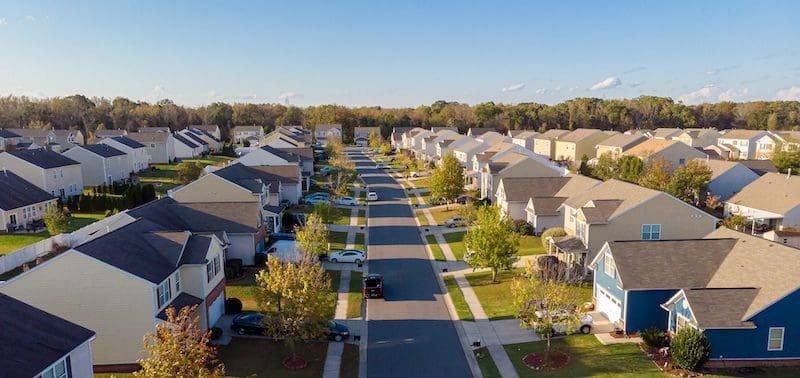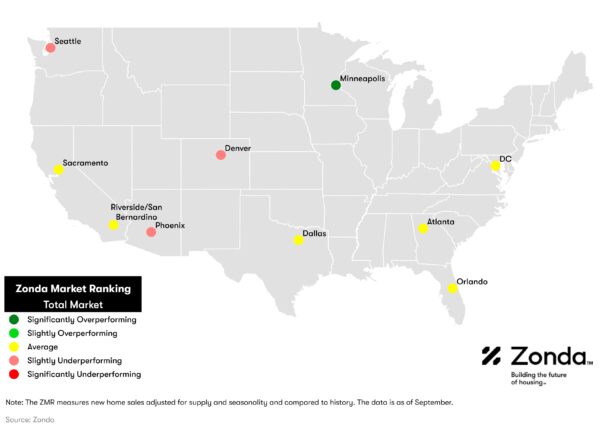2025 Cost vs. Value Report

New home sales stabilized in September amid increased supply
New home sales have been rangebound for the last year as consumers grapple with mixed messages, widespread unaffordability, and economic uncertainty. As a result, builders, whose business is to both build and sell homes, have become more resourceful in how they attract and work with today’s shoppers. Builders are actively supporting the market through the continued and increasingly creative use of incentives, strategic price cuts where needed, and a focus on providing buyers with more options.
 These efforts, paired with mortgage rates that averaged below 6.5% in September (down from 7%+ earlier in the year), helped lift sales modestly month-over-month. Still, the overall new home market continued to be classified as average by our Zonda Market Ranking.
These efforts, paired with mortgage rates that averaged below 6.5% in September (down from 7%+ earlier in the year), helped lift sales modestly month-over-month. Still, the overall new home market continued to be classified as average by our Zonda Market Ranking.
“We asked builders about the impact of the recent interest rate shift on their business in September,” said Ali Wolf, chief economist for Zonda and NewHomeSource. “Most reported that they hadn’t noticed much of a difference, describing the market as slow and noting that consumers still seem spooked by broader macro conditions. All of this is a good reminder that for consumers to make the largest purchase of their lives, they need a reason to move, adequate affordability, and confidence in where the market is headed.”
New home sales have been rangebound
Zonda’s new home sales metric counts the number of new home contract sales each month and accounts for both cancellations and seasonality. This metric shows there were 716,406 new homes sold in September on a seasonally adjusted annualized rate. This was a gain of 3.1% from last month, but flat from a year ago. On a non-seasonally adjusted basis, 57,263 homes were sold, 0.6% higher than last year and 8.6% above the same month in 2019.
The PSI posted a modest monthly gain
Zonda’s New Home Pending Sales Index (PSI) was created to help account for fluctuations in supply by combining both total sales volume with the average sales rate per month per community. The September PSI came in at 141.2, representing a 6.3% decline from the same month last year. The index is currently 18.9% below cycle highs. On a month-over-month basis, seasonally adjusted new home sales increased 2.6%.
- The markets that posted the best numbers relative to last year were San Francisco (+13.7%), Salt Lake City (+5.4%), and Dallas (+4.0%). San Francisco was up compared to the last year and grew 2.2% month-over-month.
- Inversely, the metros that performed the worst year-over-year were Baltimore (-31.4%), New York (-28.3%), and Las Vegas (-23.9%).
- On a monthly basis, Denver, Phoenix, and Seattle were the best performing markets. Denver increased 13.5% relative to last month.
